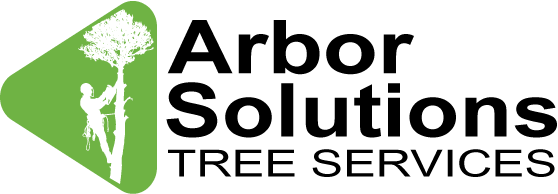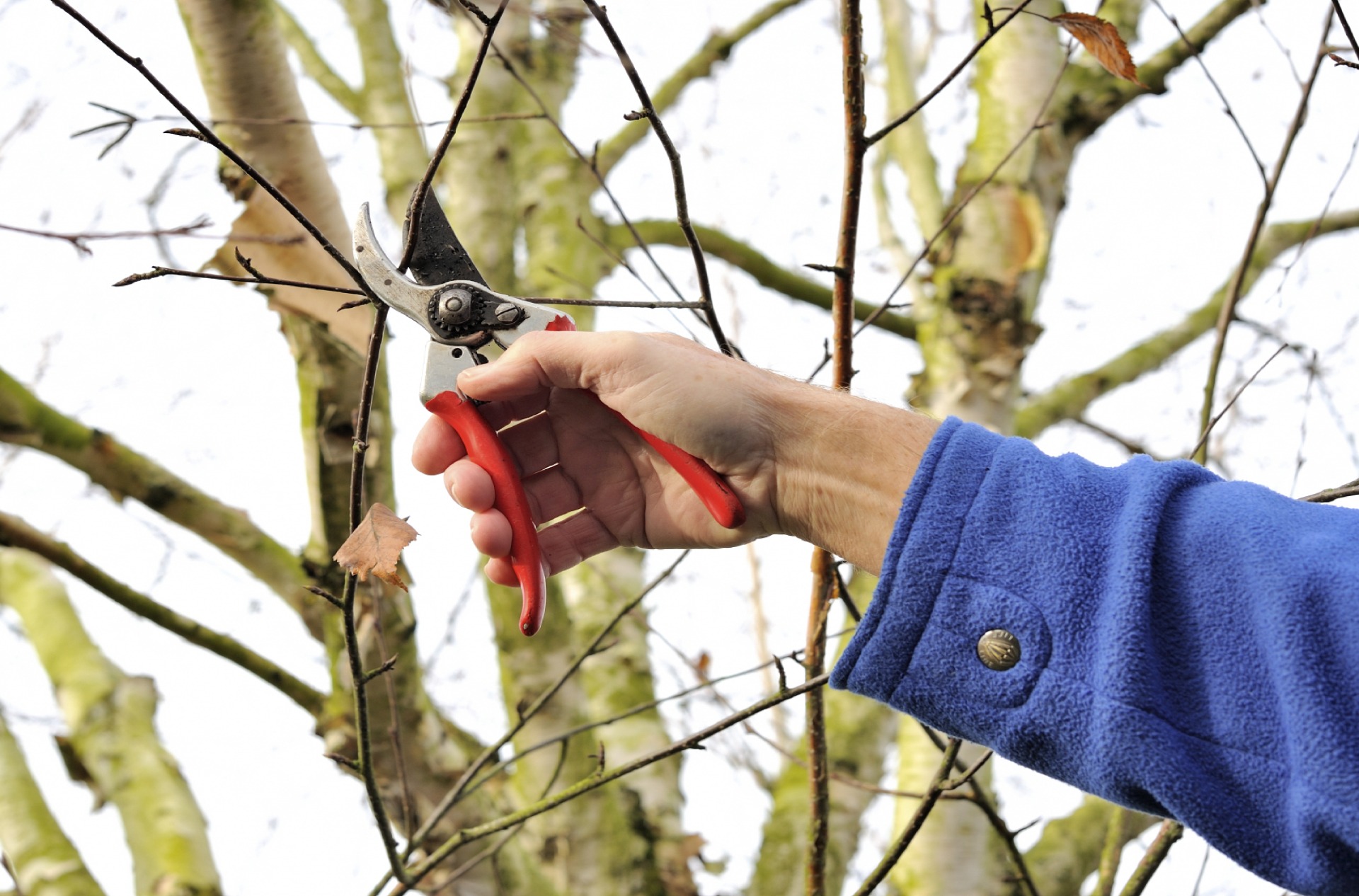Proper tree trimming is critical for your trees health.
Welcome to Arbor Solutions Tree Service’s Proper Tree Trimming FAQ Page. Here, we provide answers to common questions about proper tree trimming techniques and why they are essential for maintaining the health and beauty of your trees. Discover expert insights on the benefits of regular pruning, the best time to trim trees, and how to identify signs that your trees need trimming. Explore our FAQ section to learn how proper tree trimming can improve tree health, promote growth, and enhance the safety and aesthetics of your outdoor space.
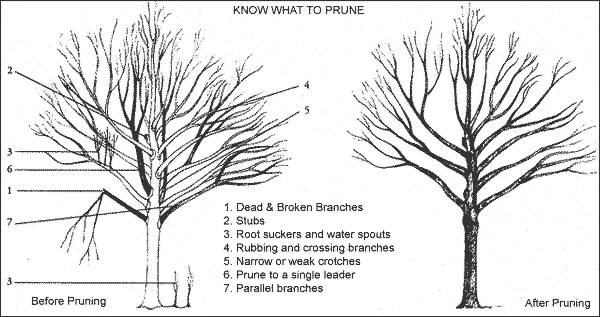
Prune Regularly: Regular pruning promotes healthy growth, removes dead or diseased branches, and maintains the overall shape and structure of the tree.
Follow the 3-Cut Method: When removing larger branches, use the 3-cut method to prevent bark tearing and damage to the tree. Start with an undercut, followed by a top cut, and finish with a final stub cut.
Maintain the Branch Collar: When pruning branches, make cuts just outside the branch collar—the swollen area where the branch meets the trunk or larger branch. This preserves the tree's natural healing process and prevents disease entry.
Avoid Over-pruning: Over-pruning, or topping, can weaken the tree and make it more susceptible to disease and pests. Stick to removing dead, damaged, or crossing branches, and avoid removing more than 25% of the tree's canopy in a single pruning session.
Consider Seasonality: While light pruning can be done year-round, major pruning should be done during the dormant season (late fall to early spring) to minimize stress on the tree and promote vigorous growth in the following growing season.
Hire a Professional: For large or complex pruning tasks, or if you're unsure about proper techniques, it's best to hire a certified arborist or tree care professional to ensure the job is done safely and effectively.
It’s crucial to avoid topping and instead opt for proper pruning techniques performed by trained professionals to ensure the health and longevity of trees.
Weakens Tree Structure: Topping removes large portions of the tree's canopy, resulting in weakly attached, fast-growing branches that are prone to breakage and pose safety hazards.
Increases Susceptibility to Pests and Diseases: Topping exposes the tree to pests, diseases, and decay by compromising its natural defenses, leaving it vulnerable to infestation and infection.
Promotes Rapid Re-growth: Topping stimulates rapid and unhealthy re-growth of branches, creating dense, weakly attached shoots that are susceptible to breakage and further structural issues.
Diminishes Aesthetic Value: Topping results in disfigured and unsightly trees, detracting from the natural beauty and visual appeal of the landscape.
Shortens Tree Lifespan: Topping significantly reduces the lifespan of trees by weakening their structure, compromising their ability to withstand environmental stressors, and accelerating their decline and eventual death.
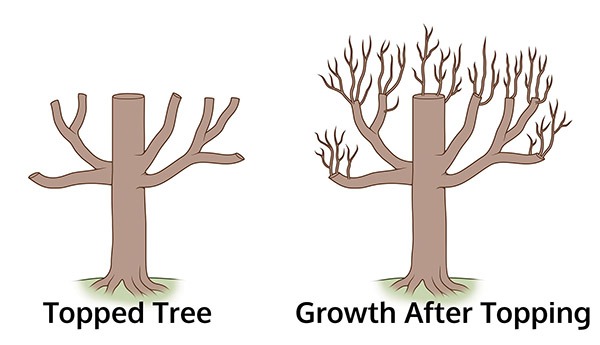
How to properly trim a tree.
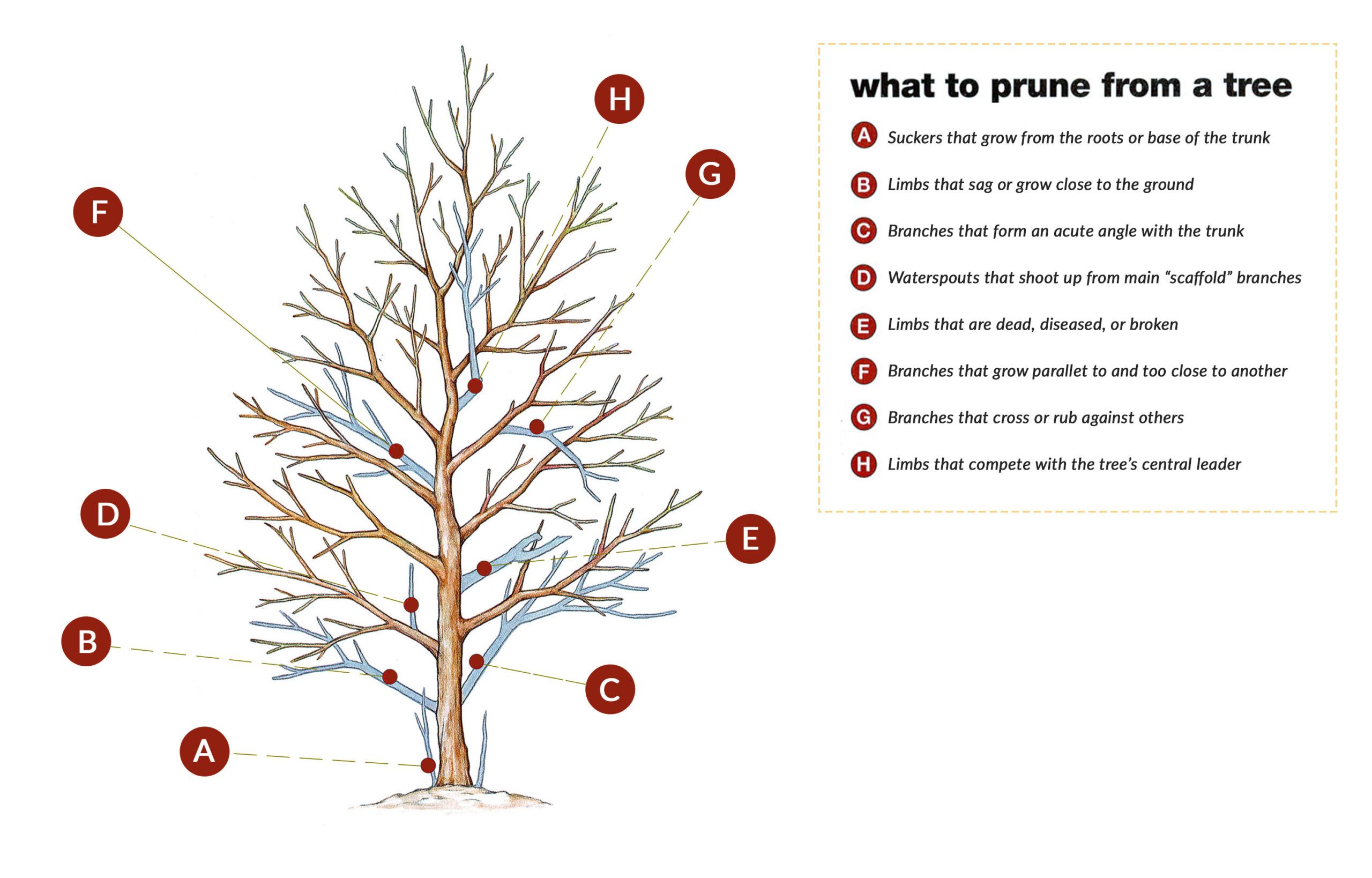
Identify Target Branches: Start by identifying dead, diseased, or crossing branches that need to be removed to improve the tree's health and structure.
Use Sharp, Clean Tools: Use sharp and clean pruning tools, such as hand pruners or pruning saws, to make precise cuts without causing unnecessary damage to the tree.
Cut Outside the Branch Collar: Make cuts just outside the branch collar—the swollen area where the branch meets the trunk or larger branch—to promote proper healing and prevent disease entry.
Employ the 3-Cut Method for Larger Branches: When removing larger branches, use the 3-cut method to prevent bark tearing and damage to the tree. Start with an undercut, followed by a top cut, and finish with a final stub cut.
Avoid Over-pruning: Remove only the necessary branches to maintain the tree's health and structure, avoiding the removal of more than 25% of the canopy in a single pruning session.
Consider Natural Growth Patterns: Consider the tree's natural growth habits and shape when making pruning decisions, aiming to maintain its structural integrity and aesthetic appeal.
Seek Professional Guidance: If you're uncertain about proper pruning techniques or dealing with large branches, consult with a certified arborist or tree care professional for expert guidance and assistance.
Arbor Solutions Tree Service is your #1 choice to trim your trees
Certified Arborists: Our team consists of certified arborists with the expertise and knowledge to assess your trees' health and trim them according to industry standards.
Precision Techniques: We employ precision trimming techniques to promote healthy growth, improve structural integrity, and enhance the aesthetic appeal of your trees.
Tailored Solutions: Arbor Solutions customizes trimming plans to meet the unique needs of each tree and address specific concerns such as overgrowth, deadwood removal, or canopy thinning.
Safety First: With safety as our priority, we ensure that all trimming operations are conducted with proper safety measures in place to protect both our team and your property.
Customer Satisfaction: Arbor Solutions is committed to delivering exceptional service and exceeding customer expectations, ensuring that your trees receive the care they need to thrive.
Get A Free Quote In Under 24 Hours
Tree Removal
Tree Trimming
Emergency Tree Service
SERVICE AREA
and Surrounding Areas
